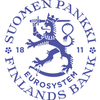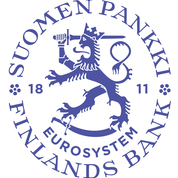Bank of Finland to transfer EUR 188 million to the State

The Parliamentary Supervisory Council has today confirmed the Bank of Finland’s financial statements for 2019. Upon proposal by the Board of the Bank of Finland, the Parliamentary Supervisory Council decided that EUR 188 million will be transferred to the State.
The Bank of Finland’s audited profit for the financial year 2019 totals EUR 320 million. According to the Act on the Bank of Finland, half of the Bank’s profit shall be transferred to the reserve fund and the remaining profit made available for use by the State. However, the Act allows for an exceptional profit distribution if justified by the Bank’s financial condition or the size of the reserve fund.
In its profit distribution proposal, the Bank of Finland Board assessed that the Bank’s capital adequacy is sufficient to cover the risks related to the undertaking of its tasks. Based on these considerations, and as in the previous years, a share of the profit exceeding the statutory 50% will be made available to the State.
The Bank of Finland’s income consists primarily of interest income on banknotes and the Eurosystem’s monetary policy items, investment income on foreign reserves and other financial assets of the Bank as well as the Bank’s share in the ECB’s profit that the ECB allocates to the euro area central banks. Net interest income amounted to EUR 755 million in 2019 (2018: EUR 697 million). Of this, EUR 589 million was earned on monetary policy items, the most significant of which was the negative interest rate charged on commercial bank deposits. However, the major part of the increase in net interest income was due to higher income on foreign reserve assets.
A general provision totalling EUR 50 million was made against risks arising from the conduct of central banking activities. ‘The Eurosystem will launch a new extensive Pandemic Emergency Purchase Programme (PEPP). In addition, the Bank of Finland will start to invest in the domestic market for commercial papers. The implementation of monetary policy and investment of financial assets entail financial risks, and the Bank prepares for these risks with sufficient buffers,’ stated Marja Nykänen, Deputy Governor of the Bank of Finland.
The Bank of Finland’s income covers its operating expenses and provisions. Operating expenses net of banknote production services and an additional pension fund contribution amounted to EUR 99 million in 2019 (2018: EUR 97 million).
The Bank of Finland’s financial statements, which also include the income and expenses of the Financial Supervisory Authority, have been published today on 20 March 2020 on the Bank’s website.
For further information, please contact: Marja Nykänen, Deputy Governor of the Bank of Finland, tel. +358 9 183 2007.
Bank of Finland Annual Report 2019 (in Finnish)
Keywords
Images
Links
About Suomen Pankki
The Bank of Finland is the national monetary authority and central bank of Finland. At the same time, it is also a part of the Eurosystem, which is responsible for monetary policy and other central bank tasks in the euro area and administers use of the world’s second largest currency – the euro.
Subscribe to releases from Suomen Pankki
Subscribe to all the latest releases from Suomen Pankki by registering your e-mail address below. You can unsubscribe at any time.
Latest releases from Suomen Pankki
Inlåningen från hushållen var den största genom tiderna i november 20257.1.2026 10:00:00 EET | Pressmeddelande
Inlåningen från hushållen har ökat 2025 samtidigt som inlåningsräntorna har sjunkit. Inlåningen har ökat i alla inlåningsformer. Dessutom ingick finländska företag i november rikligt med nya avtal om tidsbunden inlåning.
Kotitalouksien talletuskanta oli kaikkien aikojen suurin marraskuussa 20257.1.2026 10:00:00 EET | Tiedote
Kotitaloudet ovat kasvattaneet talletuksiaan vuonna 2025 samaan aikaan kun talletusten korot ovat laskeneet. Talletukset ovat kasvaneet kaikissa talletusmuodoissa. Lisäksi suomalaiset yritykset solmivat marraskuussa runsaasti uusia määräaikaistalletussopimuksia.
Households' deposit stock at all-time high in November 20257.1.2026 10:00:00 EET | Press release
Households have increased their deposits in 2025 while interest rates on deposits have declined. Deposits have grown in all deposit categories. In addition, Finnish corporations concluded a high volume of new agreements on deposits with agreed maturity in November.
Referensränta och dröjsmålsräntor enligt räntelagen för tiden 1.1–30.6.202622.12.2025 13:30:00 EET | Pressmeddelande
Referensräntan enligt 12 § i räntelagen (633/1982) är 2,5 % för tiden 1.1–30.6.2026. Dröjsmålsräntan för denna period är 9,5 % per år (referensräntan med tillägg för sju procentenheter enligt 4 § i räntelagen). Den dröjsmålsränta som tillämpas i kommersiella avtal är 10,5 % per år (referensräntan med tillägg för åtta procentenheter enligt 4 a § i räntelagen).
Korkolain mukainen viitekorko ja viivästyskorot 1.1.–30.6.202622.12.2025 13:30:00 EET | Tiedote
Korkolain (633/1982) 12 §:n mukainen viitekorko ajanjaksona 1.1.–30.6.2026 on 2,5 %. Viivästyskorko tänä ajanjaksona on 9,5 % vuodessa (viitekorko lisättynä korkolain 4 §:n mukaisella 7 prosenttiyksikön lisäkorolla). Kaupallisiin sopimuksiin sovellettavaksi tarkoitettu viivästyskorko on 10,5 % vuodessa (viitekorko lisättynä korkolain 4 a §:n mukaisella 8 prosenttiyksikön lisäkorolla).
In our pressroom you can read all our latest releases, find our press contacts, images, documents and other relevant information about us.
Visit our pressroom

